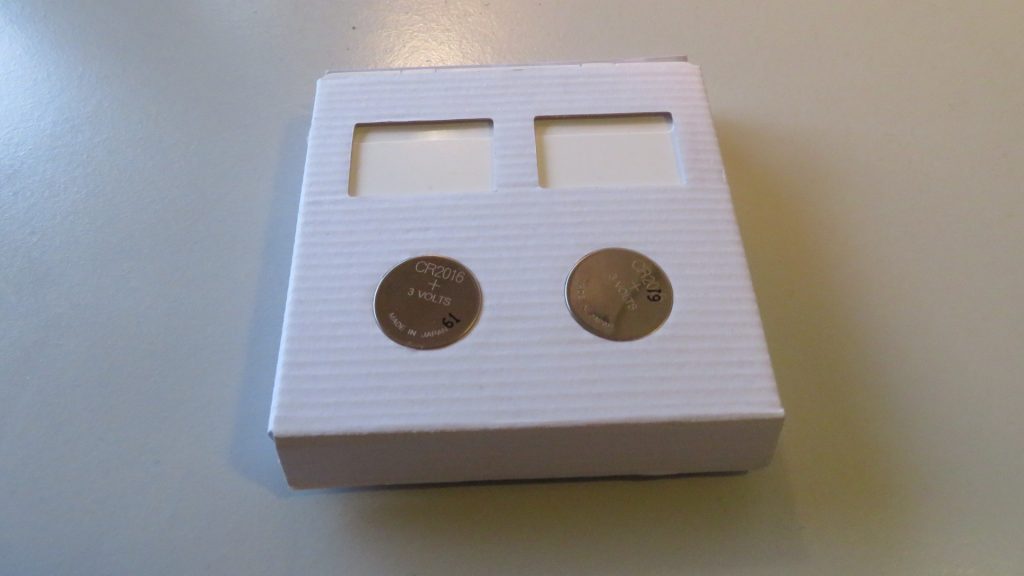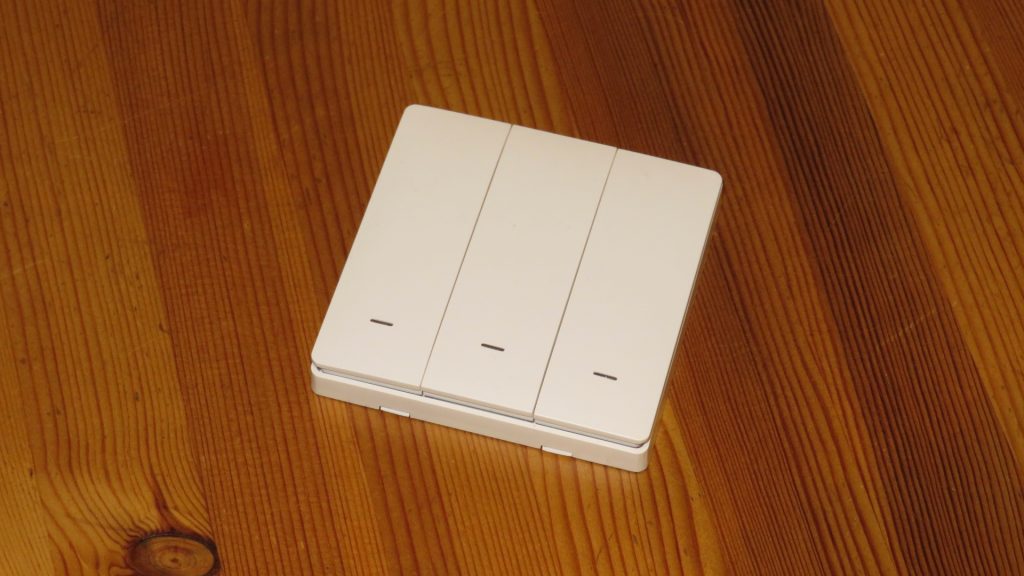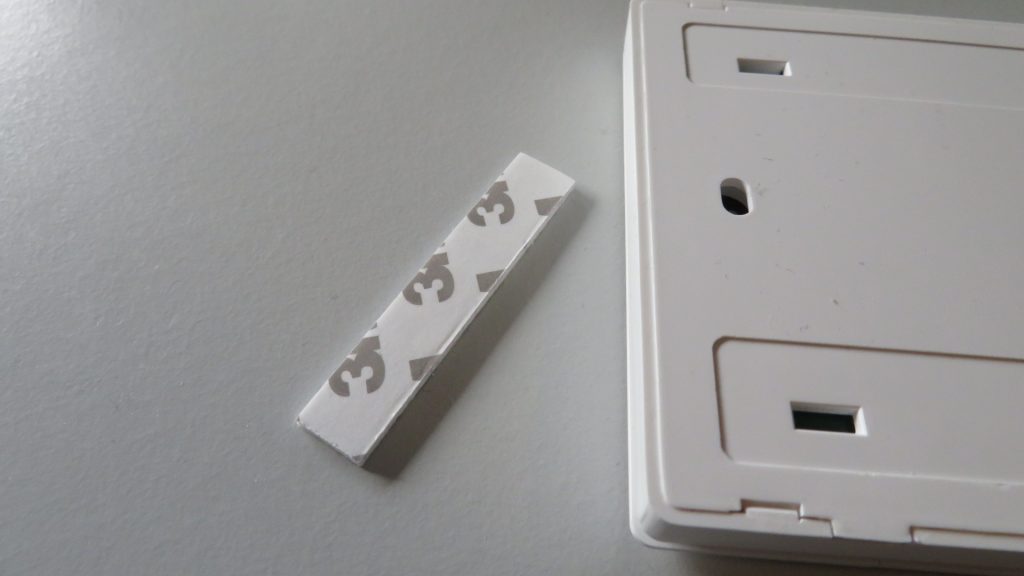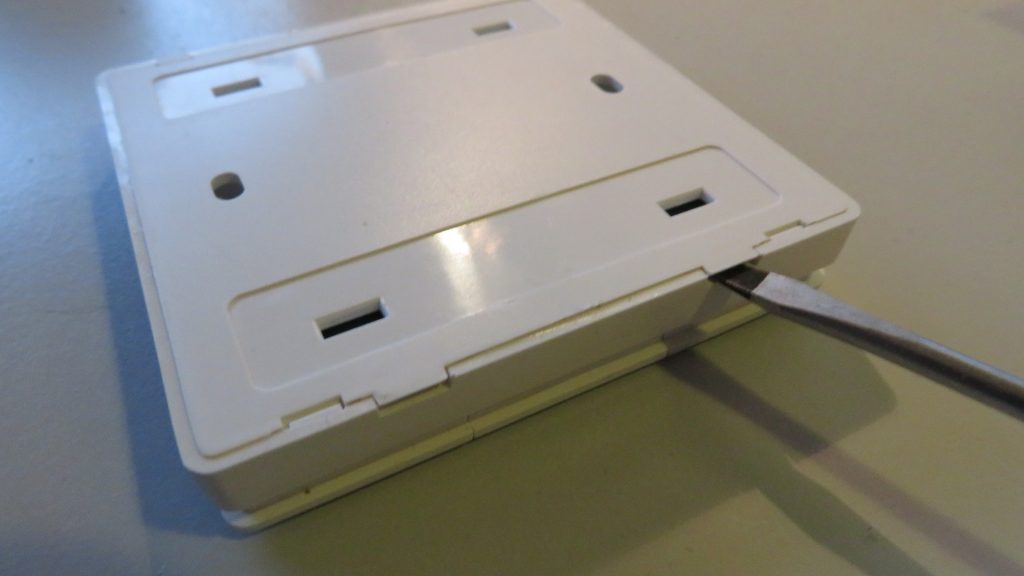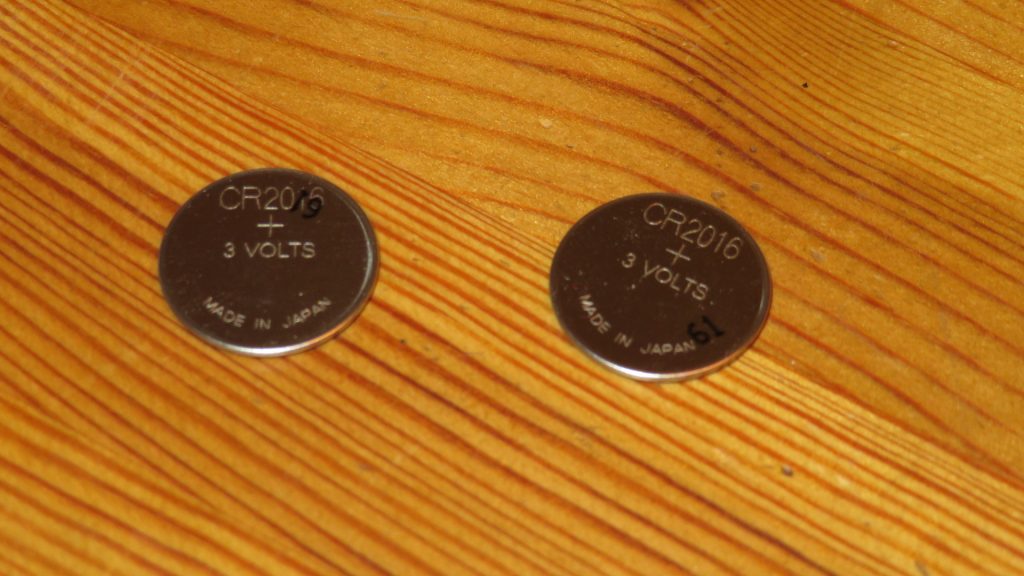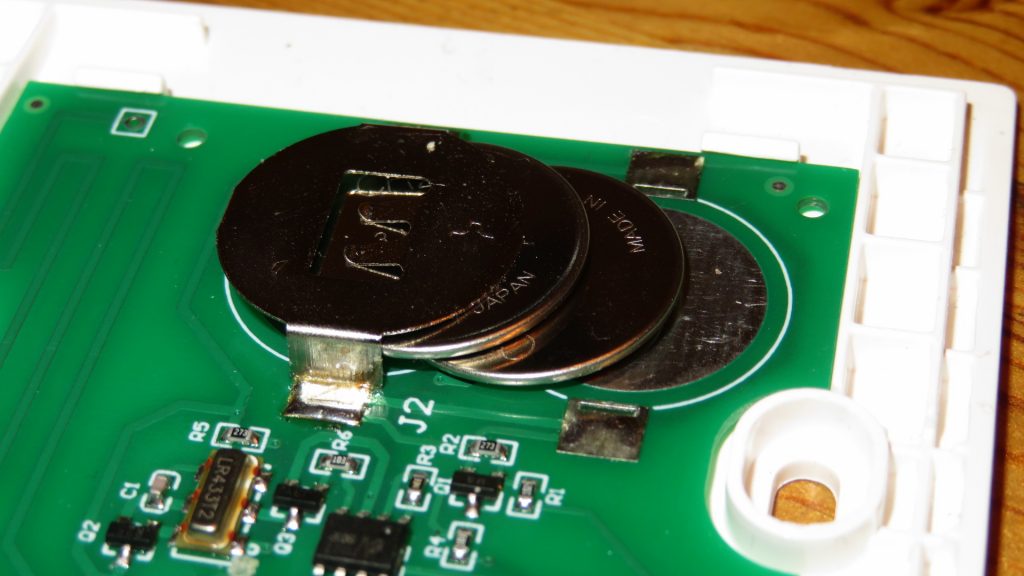On December 22, 2020 we received a sample package from eWeLink free of charge. One of the items in this package is an OEM 433 MHz RF 3-gang mechanical switch. The switch can be used to drive RF receiving devices like the Sonoff RF bridge or the Sonoff 4CHPROR3.
This article is written by Joennuh.
In the interest of full transparency
- The sample has been sent to us free of charge.
- We didn’t get paid for this review.
- The opinions we share in this review are our very own opinions.
- This review is not previewed by eWeLink before publication.
Packaging
The packaging material is quite simple: thin cardboard and wihin the package a slightly thicker cardboard which holds the switch and in my case 1 CR2016 battery. There are 2 batteries needed but one might get lost during testing at the eWeLink office. I ordered 2 new CR2016 batteries locally to solve this issue. I believe the packaging is good enough for such a simple cheap product.
There was no instruction manual included in the package but actually that isn’t very needed with such a simple product.
Appearance of the device and installation
The switch is quite simple. The height and width of the switch is about the dimensions of many EU and UK normal in-wall switches: 86 x 86 millimeter. The depth of the switch is small: only 15 millimeter. It is easy to fit next to a normal in-wall switch. The switch has a very nice decent look.
You can attach the switch to the wall with 2 screws or a included 3M sticky tape. In my package only one small sticky tape was included of which I believe it won’t hold the switch for the eternity.
To attach the switch to the wall with screws you will need to open the case with a small flat screwdriver. Place the screwdriver in the small openings of the switch at the bottom side and twist the screwdriver. Doing this with your bare hands will be very difficult. I experienced a screwdriver works the best. When you have opened the switch you will easily find the 2 mounting holes which can be used to attach the switch to the wall with screws (not included with the package).
After opening the switch the batteries needs to be inserted. If you look at the battery holder it looks to hold one CR2025 or CR2032 battery but such a battery fits loose in the this battery holder and does not deliver the required voltage of 5V. It needs two CR2016 batteries which I believe are quite non-standard. Since my sample arrived with only one CR2016 battery (the other one probably got lost during testing at the eWeLink office) I had to buy new ones in my country.
While waiting for the new batteries I tested the switch by attaching alligator clip wires which were attached to my 5V breadboard power module. I tested with both 3.3V and 5V and it turned out 5V worked the best.
Durability
Although the switch seems to be a cheap device its building quality seems to be quite durable, I believe it can survice many clicks. Because it is a mechanical switch I believe the chance of clicks not being fetch is much less compared to any touch switch, That’s a plus for this 3-gang switch.
Bouncing each button back is done by a small piece of metal which you can easily see on the photos of the lid below. Both the backplate and lid feels sturdy.
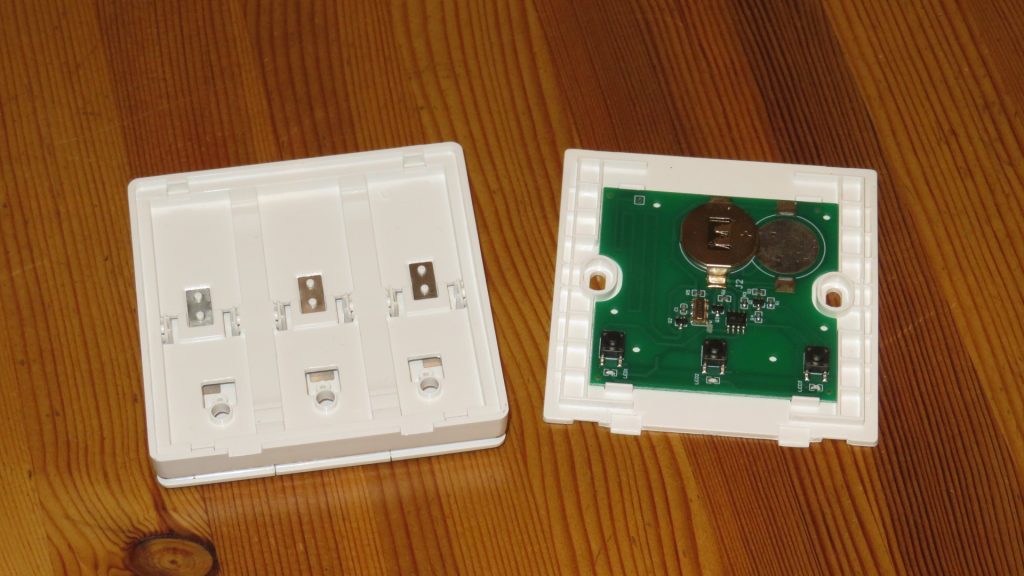
Opened switch 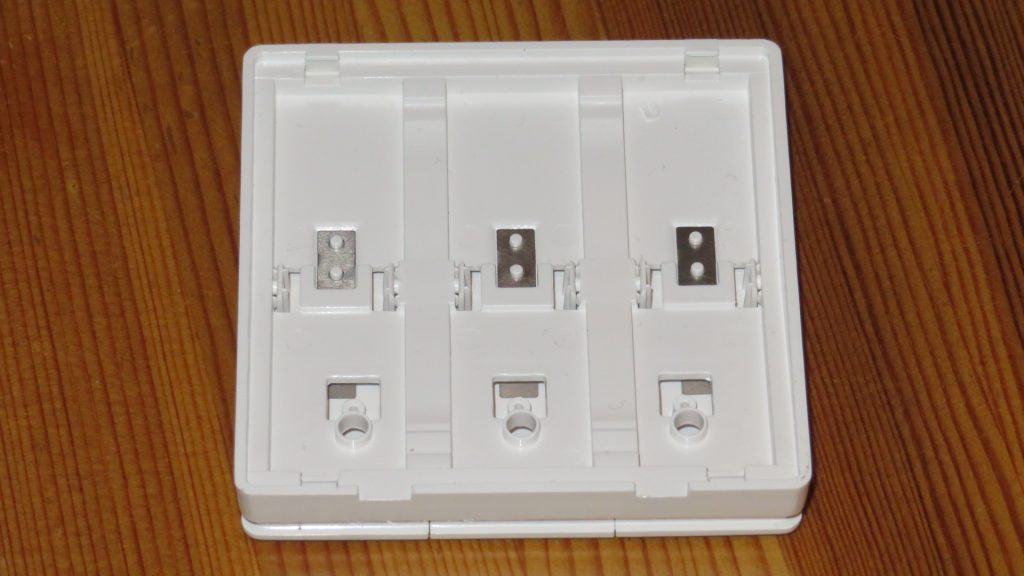
Lid 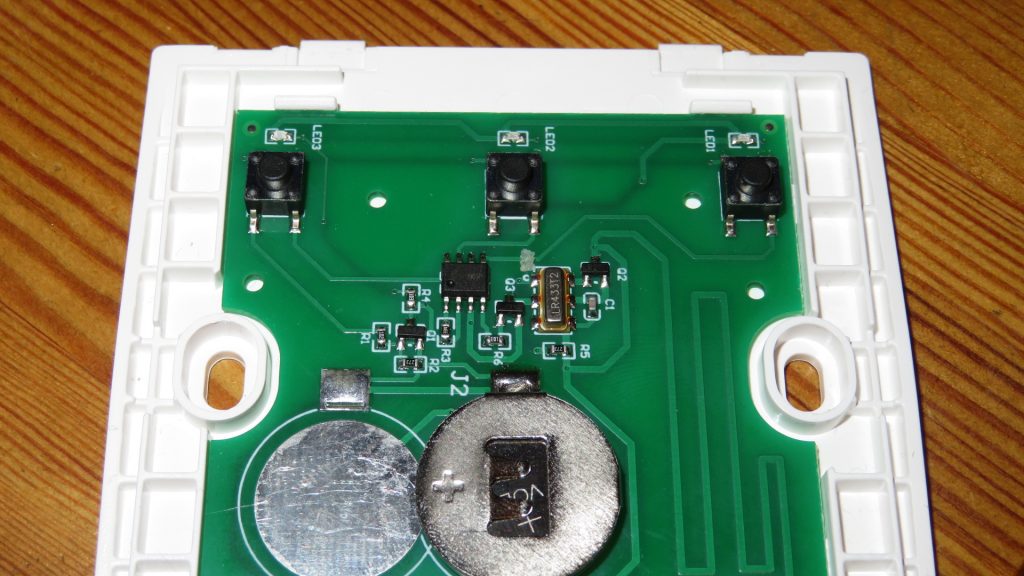
Overview of components
Compatibility
As the switch is quite a standard and simple 433 MHz RF device it can work together with many device. In my test below I used it with a Sonoff RF Bridge. Each button can be learned as an individual alarm by the Sonoff RF bridge.
You might think you can use the switch to drive 3 devices with it but I discovered you can send more distinguishing commands to the Sonoff RF bridge by combined pressing of the buttons on the switch. So this allows you to use the following button commands:
- Button 1
- Button 2
- Button 3
- Button 1 + 2
- Button 2 + 3
- Button 1 + 2 + 3
This leaves you 6 distinguishing RF commands to use although the last combination (button 1 + 2 + 3) is hard to press all together at once. You can use each button command / RF alarm as a scene trigger in the eWeLink app.
Usability
There is nothing complex to most 433 MHz RF devices. Even this one without manual isn’t very complex to use. To pair it with your RF bridge you just add a new alarm to your RF bridge and follow the steps shown on the screen of your mobile. The reception of the RF signals from the switch to the RF bridge pretty good. Most button presses are pretty well registered. Only a few short delays sometimes.
Stability
As mentioned at the chapter Usability the switch works quite well. We have test the device for a few weeks and we guess only 2 out of 20 button presses might get missed or delayed. We did not do exact maths on that but in our experience it does not frustrate us to much.
Demonstration video
Below you see a little demonstration video of the OEM 433 MHz RF 3-gang mechanical switch. 5 button combinations are learned by the Sonoff RF bridge and 4 of them got a scene in which they got used.
I configured the following scenes:
- Scene for button 3 to switch a RF socket on (intended to switch a fan on on a bedroom).
- Scene for button 1 to switch that same RF socket off (intended for that same fan).
- Scene for button 2 + 3 to switch a Sonoff Micro on (to switch a flashing light on, mainly for fun and demonstration purpose).
- Scene for button 1 + 2 to switch the same Sonoff Micro off (to switch that same flashing light off).
You might think “Why didn’t you assign the on scene to button 1 and the off scene to button 3?”. My intention is to place the switch behind me on the wall behind my bed. So while not looking at the switch you tend to operate the switch reversed. So: why not assigning the features in reverse too? Automation can make life so much easier. ?
Availability
Since the switch we received is an OEM switch it is difficult to find exact the same switch. We believe the OEM manufacturer has improvded the internal components to use the more common CR2032 battery and operate on 3V. In that case the closest we got if we look at the design is the Lonsonho RF 433 MHz light switch. But we don’t know for sure if it works litterally that reliable as our tested RF switch. Also we don’t know wehther it produces the extra RF commands with combined button presses.
Product information
Lonsonho RF 433 MHz light switch
- 433 MHz RF switch
- Available in variants of 1-, 2- and 3-gang
- Operates on CR2032 battery
Scorecard
-
Design - 7/107/10
-
Durability - 8/108/10
-
Usability - 7/107/10
-
Compatability - 9/109/10
-
Usefulness - 9/109/10
-
Stability - 8.5/108.5/10
Summary
Flat and easy to place RF switch for every spot in your house you can imagine. Paired with the Sonoff RF bridge it works pretty good. Good reception. Downside is the 2x CR2016 battery and the absence of a manual.

